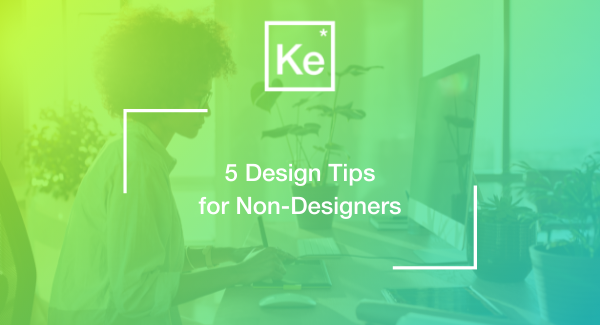Sitting down to design something—a social media graphic, email, poster—can seem overwhelming if you don’t have design experience. While there is a world of knowledge when it comes to design, it doesn’t need to be hard. We have some simple tips that even non-designers can follow to help their pieces seem more professional and polished!
Increase your whitespace
Whitespace isn’t just the color white—it’s the space between design elements like text, images, etc. While it may seem like wasted space, it’s not. Whitespace serves a purpose in design. It helps balance elements and organize content to improve communication. It also brings emphasis to specific parts of your design, focusing your reader’s attention. Whitespace in design is like pausing to breathe while talking—you need it if you want people to keep listening to you!
Cut the copy
Copy is a large element of design. It’s one of the keys to communicating your ideas. Your reader’s time should be rewarded. Condense your copy so that you don’t overwhelm your readers; overwhelmed readers will leave to read something else. Aim to make your piece clear, concise, and smooth to read.
Contrast = legibility
Contrast is a key principle in design. It helps establish the hierarchy of information and provides better legibility. Contrast also adds visual interest, adding to the aesthetic of your piece. Contrast should be used in balance so that your work does not end up confusing or visually jarring. Try using contrasting—but not conflicting—sizes, colors, shapes, and types of elements (photos vs copy vs graphics). When used correctly, contrast should not stand out in a piece but instead make the overall design easily understandable.
Use only one font
Using multiple fonts (or too many sizes and styles) can seem unprofessional and may distract your reader from what you’re trying to communicate. What you need is consistency and legibility! Different sources will tell you to use up to three fonts, but if you’re not confident in your choices, try using one font family. A font family is one font in different styles (bold, light, condensed, italic, etc) that all work together. Using one font can achieve your goal of consistency while keeping you sane (and saving time).
Align yourself
Another easy design principle to follow is alignment. A design that’s not aligned looks cluttered and unfinished, while a piece that is aligned looks more professional and trustworthy. Whether it’s left, center, or right, choose an alignment for your piece and stick with it! It helps organize and group information, creates balance in the piece, and helps readers create connections as they go through your design.
While these tips are not everything there is to know about design, they are enough to help you create something that looks nice and is easy to understand. The key is to keep it simple, and make it easy on yourself! This quote by Leo Burnett says it all: “Make it simple. Make it memorable. Make it inviting to look at. Make it fun to read.”
P.S. If you’re still feeling overwhelmed, contact us about your design project! We have professional designers who can help you and your business.



